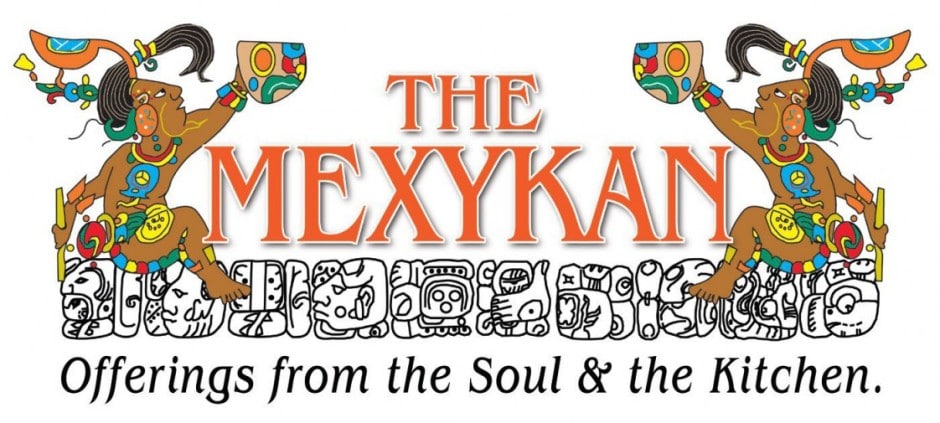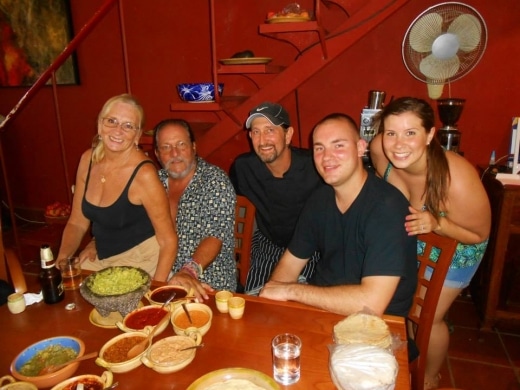Budget, Backpackers, Surfers, Beach Lovers, Naturalist, Hippie, Sun and Sand worshipers, Off the Beaten Path Paradise! Everyone is welcome at Zipolite!
Translate
A little about Playa Zipolite, The Beach of the Dead . . .
Playa Zipolite, Oaxaca, Southern Mexico, on the Pacific Ocean. A little bit about my favorite little get-away on this small world of ours.Zipolite, a sweaty 30-minute walk west from Puerto Angel, brings you to Playa Zipolite and another world. The feeling here is 1970's - Led Zep, Marley, and scruffy gringos.A long, long time ago, Zipolite beach was usually visited by the Zapotecans...who made it a magical place. They came to visit Zipolite to meditate, or just to rest.Recently, this beach has begun to receive day-trippers from Puerto Angel and Puerto Escondido, giving it a more TOURISTY feel than before.Most people come here for the novelty of the nude beach, yoga, turtles, seafood, surf, meditation, vegetarians, discos, party, to get burnt by the sun, or to see how long they can stretch their skinny budget.I post WWW Oaxaca, Mexico, Zipolite and areas nearby information. Also general budget, backpacker, surfer, off the beaten path, Mexico and beyond, information.REMEMBER: Everyone is welcome at Zipolite.ivan
Zipolite Blog Links
- Playa Zipolite
- Zipolite Entertainment, Party, Sports, Dance, Clubs, Music - - - Zipolite Entretenimiento, Fiesta, Deportes, Baile, Discotecas, Música
- Zipolite Food, Drink, Sunrise, Sunset - - - Zipolite Comida, Bebida, Amanecer, Atardecer
- Zipolite Nudist - - - Zipolite Nudista
- Zipolite ... Rentals, Camping, Hammocks, Apartments, House - - - Zipolite ... Alquileres, Camping, Hamacas, Apartamentos, Casa
- Zipolite Tours - - - Tours en Zipolite
- Zipolite Transportation and Rentals, Taxis, Bike, Moped, ATV - - - Zipolite Transporte y Renta, Taxis, Bicicleta, Ciclomotor, Cuatrimotos,
- Zipolite Yoga, Relax, Meditation, Temazcal - - - Zipolite Yoga, Relax, Meditación, Temazcal
- Budget Backpackers Off The Beaten Path - - - Mochileros económicos fuera del camino trillado
- Just For Fun ... by iVAn - - - Solo por diversión... de iVAn
- Near Zipolite - - - Cerca de Zipolite
- Travel Mexico - - - Viajes México
- ALL Playa Zipolite Blogspot Dot Com - - - TODO Playa Zipolite Blogspot Dot Com
Tuesday, February 28, 2017
Monday, February 27, 2017
Of Corn (Native and Transgenic) Huffington Post Early on a February morning, before our Casa de los Sabores cooking class in Oaxaca, Mexico, we accompanied the chef/teacher Pilar Cabrera to the ...
Of Corn (Native and Transgenic)
02/26/2017 04:25 pm ET
Report from Oaxaca, Mexico
Early on a February morning, before our Casa de los Sabores cooking
class in Oaxaca, Mexico, we accompanied the chef/teacher Pilar
Cabrera to the local market to buy ingredients. Piled high in the
stands before us, were small green and purple tomatillos, sacks
of fresh and dried chiles (especially Chile Chilhuacle negro, used
in the area’s chichilo mole and mole negro), juicy green limons
(typically key lime fruit),and an extraordinary variety of herbs,
many of them local, like Pitiona a kind of wild sage.
class in Oaxaca, Mexico, we accompanied the chef/teacher Pilar
Cabrera to the local market to buy ingredients. Piled high in the
stands before us, were small green and purple tomatillos, sacks
of fresh and dried chiles (especially Chile Chilhuacle negro, used
in the area’s chichilo mole and mole negro), juicy green limons
(typically key lime fruit),and an extraordinary variety of herbs,
many of them local, like Pitiona a kind of wild sage.
Just before we left the market, Cabrera stopped to buy corn masa
from a woman who was kneading the dough. It is made from dried corn
that has been soaked in a solution of calcium, rinsed, and then
stone-ground and mixed with water until a paste forms. The corn
is ground by a molino who is located near the market.
from a woman who was kneading the dough. It is made from dried corn
that has been soaked in a solution of calcium, rinsed, and then
stone-ground and mixed with water until a paste forms. The corn
is ground by a molino who is located near the market.
The menu for the day was for Los Tamales and Cabrera had her
eight student chefs prepare Ensalada De Tomate Criollo, Jicama
Y Nopalitos, a delicious salad made from nopal cactus, purslane
leaves, grated jicama, tomatoes, ground chile piquin and lime juice,
followed by Tamales De Flores De Calabaza En Totomoxtle (squash
blossoms stuffed with corn masa and chopped chepil leaves steamed
in dried corn husks), and Tamales De Mole Negro En Joja De Platano
(chicken garlic and onion stuffed corn masa tamales steamed in fresh
banana leaves). All delicate and delicious.
eight student chefs prepare Ensalada De Tomate Criollo, Jicama
Y Nopalitos, a delicious salad made from nopal cactus, purslane
leaves, grated jicama, tomatoes, ground chile piquin and lime juice,
followed by Tamales De Flores De Calabaza En Totomoxtle (squash
blossoms stuffed with corn masa and chopped chepil leaves steamed
in dried corn husks), and Tamales De Mole Negro En Joja De Platano
(chicken garlic and onion stuffed corn masa tamales steamed in fresh
banana leaves). All delicate and delicious.
Corn, it was hard to escape during my one week visit to Oaxaca. In
the markets, in the cooking class, in the Jardin Etnobotanico de Oaxaca,
and in a temporary poster exhibit, Carteles for La Soberania Alimentaria
at IAGO, the Instituto de Artes Graficas de Oaxaca, the library and graphic
arts collection founded by artist Francisco Toledo.
the markets, in the cooking class, in the Jardin Etnobotanico de Oaxaca,
and in a temporary poster exhibit, Carteles for La Soberania Alimentaria
at IAGO, the Instituto de Artes Graficas de Oaxaca, the library and graphic
arts collection founded by artist Francisco Toledo.
During an excellent tour of the ethno-botanic garden, adjacent to the
Monastery of Santo Domingo, Dr. Alejandro de Avila Blomberg, director of the
garden, paused by an indigenous maize plant, explaining that in the wild corn
plants had no ears or cobs. Each seed was encased in a hard shell. Only
after years of breeding and selection by the local population did wild
maize, a plant that is believed to be 6,000 or 7,000 years old, become
transformed into corn, a plant yielding two or three ears with 400 seeds,
kernels in each ear.
Monastery of Santo Domingo, Dr. Alejandro de Avila Blomberg, director of the
garden, paused by an indigenous maize plant, explaining that in the wild corn
plants had no ears or cobs. Each seed was encased in a hard shell. Only
after years of breeding and selection by the local population did wild
maize, a plant that is believed to be 6,000 or 7,000 years old, become
transformed into corn, a plant yielding two or three ears with 400 seeds,
kernels in each ear.
The garden is intended as a place for education since Oaxaca is one of
the most diverse areas in the world. “There are more rock types here and
there is greater diversity of the eco systems, with a huge variety in the
types of vegetables, plants, animals, and mushrooms,” Blomberg said.
Squash seeds, over 10,000 years old (believed to be the earliest
cultivation in the entire western hemisphere) have been found in the
Guilá Naquitz Cave in Oaxaca, a site where several food crops
including teosinte, an ancestor of maize, were also cultivated.
the most diverse areas in the world. “There are more rock types here and
there is greater diversity of the eco systems, with a huge variety in the
types of vegetables, plants, animals, and mushrooms,” Blomberg said.
Squash seeds, over 10,000 years old (believed to be the earliest
cultivation in the entire western hemisphere) have been found in the
Guilá Naquitz Cave in Oaxaca, a site where several food crops
including teosinte, an ancestor of maize, were also cultivated.
Blomberg is passionate about maize. “Maize is not just food but
it is also used in bio fuel, textile fibers, cosmetics, medicines,
and cleaning fluids.” Just recently, Blomberg added, with a hint
of a smile, he heard of a “biodegradable cellphone made out of
maize.”
it is also used in bio fuel, textile fibers, cosmetics, medicines,
and cleaning fluids.” Just recently, Blomberg added, with a hint
of a smile, he heard of a “biodegradable cellphone made out of
maize.”
This year, Blomberg served as one of three jurors in IAGO’s
biennial poster competition on Transgenic Corn, Carteles for
La Soberania Alimentaria: Mexico Que pasa con neutron maiz?
According to Inari Resendiz, director at IAGO, some 641 posters
were received from around the world. The exhibit will be on view
until mid-March
biennial poster competition on Transgenic Corn, Carteles for
La Soberania Alimentaria: Mexico Que pasa con neutron maiz?
According to Inari Resendiz, director at IAGO, some 641 posters
were received from around the world. The exhibit will be on view
until mid-March
The theme, Resendiz said, was an important one to Oaxacans.
“Oaxaca is one of the richest places in corn diversity,” she said.
“We don’t need more diversity through transgenic corn.” To date,
there has been lots of action and several conferences on the subject,
many under the auspices of UCCS, the Union de Cientificos Comprometidos
con la Sociedad.
“Oaxaca is one of the richest places in corn diversity,” she said.
“We don’t need more diversity through transgenic corn.” To date,
there has been lots of action and several conferences on the subject,
many under the auspices of UCCS, the Union de Cientificos Comprometidos
con la Sociedad.
Two years ago, IAGO sponsored another poster competition focusing on
the 43 Mexican students who disappeared in 2014. The subject
stirred artists from all over the world, with over 1000 of them
submitting poster designs.
the 43 Mexican students who disappeared in 2014. The subject
stirred artists from all over the world, with over 1000 of them
submitting poster designs.
Reflecting on current global politics and the wall that President
Donald Trump wants to build along the US-Mexican border,
Resendiz added: “There’s already talk of our next theme, immigration.”
Donald Trump wants to build along the US-Mexican border,
Resendiz added: “There’s already talk of our next theme, immigration.”
SHAEL SHAPIRO
SHAEL SHAPIRO
SHAEL SHAPIRO
SHAEL SHAPIRO
SHAEL SHAPIRO
SHAEL SHAPIRO
it
SHAEL SHAPIRO
SHAEL SHAPIRO
Camping Oaxaca Tour - Mazonte, Zipolite, Huatulco eventsoja Mexico CAMPING OAXACA TOUR, 17,18,19,20 DE ABRIL◅ VISITAREMOS ♥ DIA 1 ○ PLAYA MAZONTE ♥ DIA 2 ○ PLAYA ZIPOLITE ♥ DIA 3 Y 4 ...
| Camping Oaxaca Tour - Mazonte, Zipolite, Huatulco
CAMPING OAXACA TOUR, 17,18,19,20 DE ABRIL◅ VISITAREMOS ♥ DIA 1 ○ PLAYA MAZONTE ♥ DIA 2 ○ PLAYA ZIPOLITE ♥ DIA 3 Y 4 ...
|

Camping Oaxaca Tour -
Mazonte, Zipolite, Huatulco
eventsoja Mexico > Santa Cruz Huatulco > Camping Oaxaca Tour - Mazonte, Zipolite, Huatulco
When: April 17, 2017, 12:00 pm
Venue: Bahía De Huatulco
Address: Santa Cruz Huatulco , Mexico (map)
Organizer: Disfrutar TOUR (Facebook)
► CAMPING OAXACA TOUR, 17,18,19,20 DE ABRIL◄
VISITAREMOS
♥ DIA 1 ● PLAYA MAZONTE
♥ DIA 2 ● PLAYA ZIPOLITE
♥ DIA 3 Y 4 ● PLAYA HUATULCO
● PRECIO
♡ FASE 1: $1,700 FEBRERO
♡ FASE 2: $1,800 MARZO
♡ FASE 3: $1,900 ABRIL
● INCLUYE
♦ TRANSPORTE REDONDO
♦ TRASLADOS
♦ SEGURO DEL PASAJERO
♦ SNAKS EN EL TRANSPORTE DE IDA
◘ NO INCLUYE LA CASA DE CAMPAÑA ◘
SALIDA: FRENTE A CATEDRAL MORELIA
HORA DE RECEPCIÓN 17 DE ABRIL A LAS 00:00 hrs
♦RESERVACIONES♦
● ALFREDO: 4433473227
● DEPÓSITOS ● Banco Azteca ● 5512 3804 8656 0259 Alfredo Alcantar Toledo
(para los depósitos; enviar foto del ticket vía whatsapp con su nombre completo)
VISITAREMOS
♥ DIA 1 ● PLAYA MAZONTE
♥ DIA 2 ● PLAYA ZIPOLITE
♥ DIA 3 Y 4 ● PLAYA HUATULCO
● PRECIO
♡ FASE 1: $1,700 FEBRERO
♡ FASE 2: $1,800 MARZO
♡ FASE 3: $1,900 ABRIL
● INCLUYE
♦ TRANSPORTE REDONDO
♦ TRASLADOS
♦ SEGURO DEL PASAJERO
♦ SNAKS EN EL TRANSPORTE DE IDA
◘ NO INCLUYE LA CASA DE CAMPAÑA ◘
SALIDA: FRENTE A CATEDRAL MORELIA
HORA DE RECEPCIÓN 17 DE ABRIL A LAS 00:00 hrs
♦RESERVACIONES♦
● ALFREDO: 4433473227
● DEPÓSITOS ● Banco Azteca ● 5512 3804 8656 0259 Alfredo Alcantar Toledo
(para los depósitos; enviar foto del ticket vía whatsapp con su nombre completo)
puerto Escondido Daily update ⋅ February 27, 2017 WEB Mexican Cooking Class & Local Market Tour themexykan.com The Mexykan | Offerings from the Soul & the Kitchen. Mexican Cooking Classes. Learn to Cook Mexican Food. Visit Local Market, Learn to Buy ...
| puerto Escondido
Daily update ⋅ February 27, 2017
| ||
| WEB | ||
Mexican Cooking Class & Local Market Tour
The Mexykan | Offerings from the Soul & the Kitchen. Mexican Cooking Classes. Learn to Cook Mexican Food. Visit Local Market, Learn to Buy ...
|
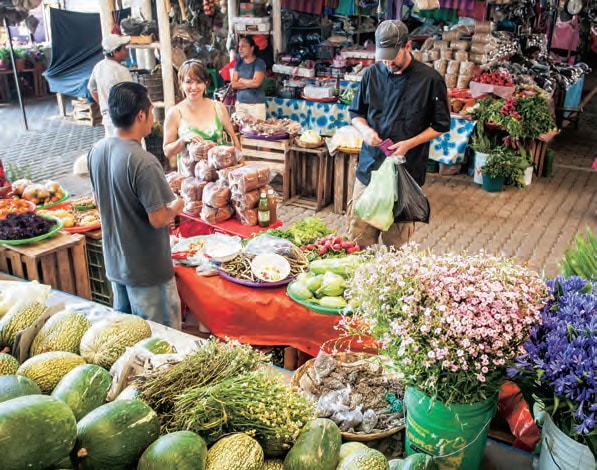
Join us
for the Mexican Cooking
Classes and Local Market Tours
in Puerto Escondido.
Individuals, Small Groups, and Families.
The Mexican Salsa Cooking Classes offer lessons concentrating on salsas.
Learn to Make Some Killer Salsas for Your Next Fiesta back home.
Learn to Prepare Fantastic Salsas.
The Salsa Cooking Classes include a multi-course lunch planned & prepared
exclusively by The Mexykan.*
In the Salsa Class, you enjoy Delicious Handmade Oaxacan Antojitos, Guacamole, Oven Roasted Meat*, Mexican Rice with Tomatoes Criollos, Oaxacan Black Beans de Olla, and More.
*Private Salsa Classes can be tailored to meet your dietary restrictions.
Please scroll down the page and fill out the simple form.
Reserve your spot today. Thanks for your interest in The Mexykan Salsa Cooking Classes.
Vamos a Cocinar!

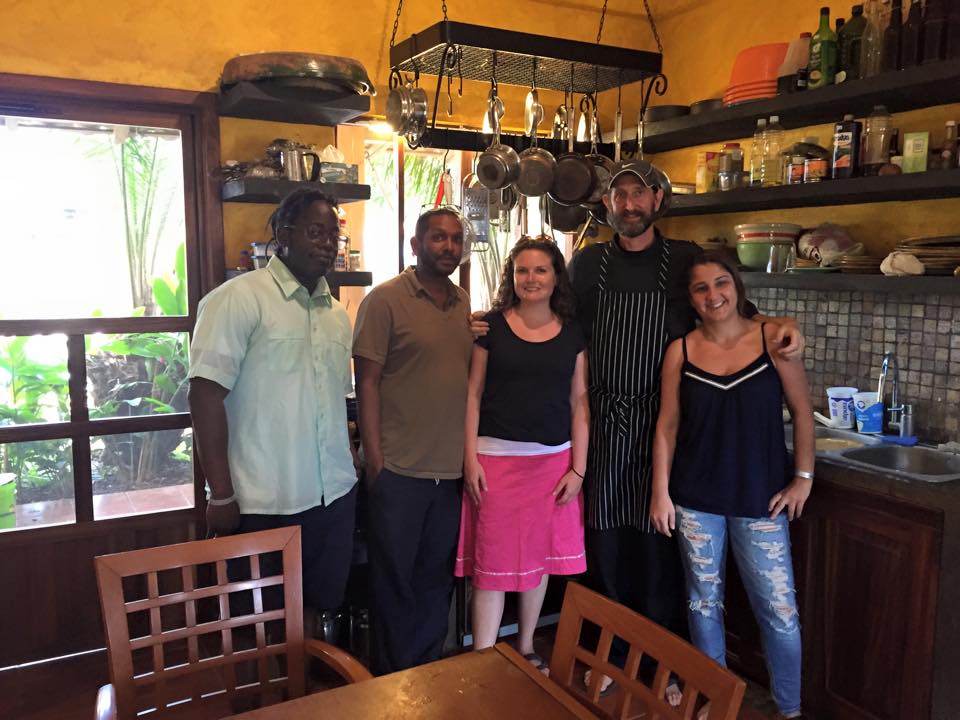
The Mexican Cooking Class & Local Market Tour.
This class offers an insider’s look in the Benito Juarez Market in Puerto Escondido. We start the day at a local comedor / Mexican diner for Oaxacan breakfast and Fresh Squeezed Juice. Here we experience the sights, sounds, and smells of the market while shopping for local ingredients. We check out the unique chiles native to Oaxaca. Learn how to buy, prepare and utilize them.
After we tour the market we head into the kitchen to prepare a sumptuous lunch in the cooking class.
In the Mexican Cooking Classes and Market Tours you will prepare a multi-course menu with local ingredients for lunch.*
We usually prepare two salsas, guacamole y tostadas, a main course for example of mole amarillo, chiles rellenos or homestyle carnitas – just to name a few of the possibilities. Plus veggies, rice, beans along with fresh fruits and cheese to finish and MORE.
*Private Cooking Classes can be tailored to your dietary needs.
Prepare Mexican Dishes and Mexican Salsas usually served only in the home, rarely in restaurants.
For more details please fill out the form below.
Reserve Your Spot Today!
Enjoy and Savor Mexican Culinary Traditions.
Below is an Excerpt from enViva Magazine. Author Brian Overcast
Mi misión imposible: El mole
Un desafío más me esperaba en Puerto Escondido: aprender a hacer mole. Igual que con el surf, que nunca me imaginé capaz de practicar, jamás pensé que podría pasar de abrir un frasco de mole y agregarle caldo, a prepararlo desde cero.
“No sé por qué a este platillo le llaman mole amarillo; es más bien rojizo y anaranjado”, me comentó mientras salíamos al patio a cortar hoja santa para saltear el camarón. Todo fluía en esta cocina: los frijoles negros y el arroz estuvieron listos a tiempo, y me reí para mis adentros cuando me imaginé intentando lo mismo en mi cocina. Mejor disfrutar de este momento, y de la cremosa y tibia salsa de mole vertida sobre los jugosos camarones; una delicia con la nota picante perfecta.
“Invigorated by having successfully
flown across water on a board, I was
ready for my next challenge: making
mole. I headed to the market in Puerto
Escondido to meet my mole instructor,
Tony. First, he took me shopping, intently
examining each chili [sic]and vegetable.
In his personal kitchen, he chopped and
stirred and mixed away—everything
just flowed naturally, and I chuckled
just thinking about attempting this on
my own. Better just enjoy this moment,
I thought, as the creamy mole sauce
poured over the shrimp. And I did.”
flown across water on a board, I was
ready for my next challenge: making
mole. I headed to the market in Puerto
Escondido to meet my mole instructor,
Tony. First, he took me shopping, intently
examining each chili [sic]and vegetable.
In his personal kitchen, he chopped and
stirred and mixed away—everything
just flowed naturally, and I chuckled
just thinking about attempting this on
my own. Better just enjoy this moment,
I thought, as the creamy mole sauce
poured over the shrimp. And I did.”
Please, if after sending your message you don’t receive a response from me within a few hours. Please Check Your Junk or Spam Folder for an email.
Sunday, February 26, 2017
Travels in Mexico FEB 25 Posted by Ted Campbelll
Travels in Mexico
Posted by Ted Campbell
Probably my favorite thing about living in Mexico—among many favorite things—is that a short drive, bus ride, or flight can take you to a whole other world.
Every corner of Mexico has pretty towns, ancient ruins, and natural areas like sunny beaches, lush jungle, and towering mountains.
Below are some photos from my travels during the past four months.
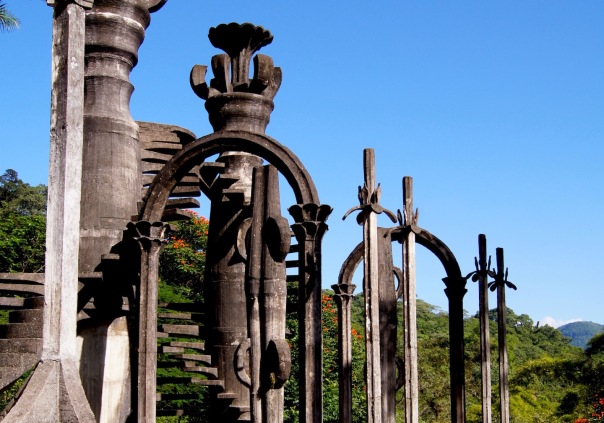
Next to the town of Xilitla, in a mountainous sub-tropical region called the Huasteca Potosina, the surrealistic garden Las Pozas is a fascinating place to explore. Built (but unfinished) by the eccentric English artist and art patron Edward James between 1949 and 1984, Las Pozas is a series of poured-concrete structures and buildings surrounded by jungle at the foot of mountains, which even has big waterfalls and swimming holes.
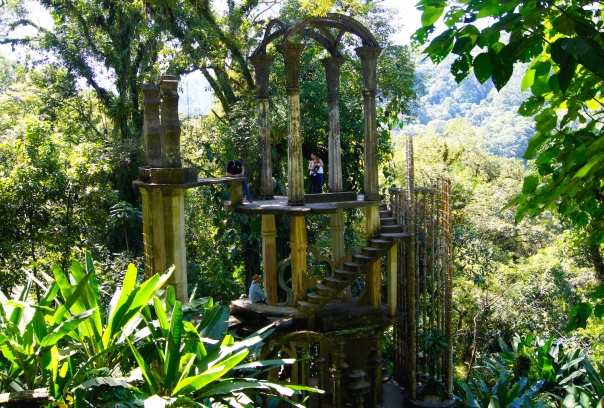
You can climb on practically everything, and every path going through deeper jungle leads to more structures, most overgrown by creeping forest. Mysterious and bizarre, it reminded me of visiting ancient ruins, though with a different history and architecture, of course.
The entire Huasteca Potosina region has streams and waterfalls, some for swimming and jumping.

Closer to where I live, the Nevado de Toluca volcano—its native name is Xinantecatl—is a scenic and very high place to do some hiking.
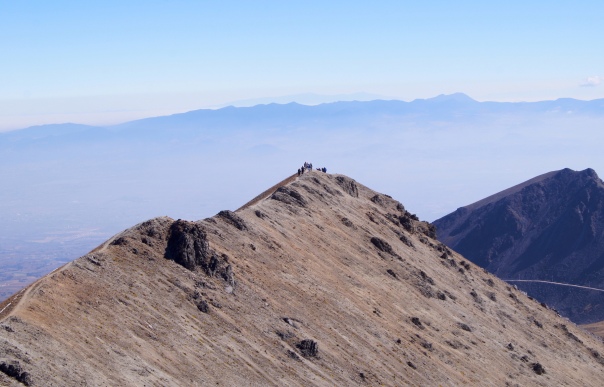
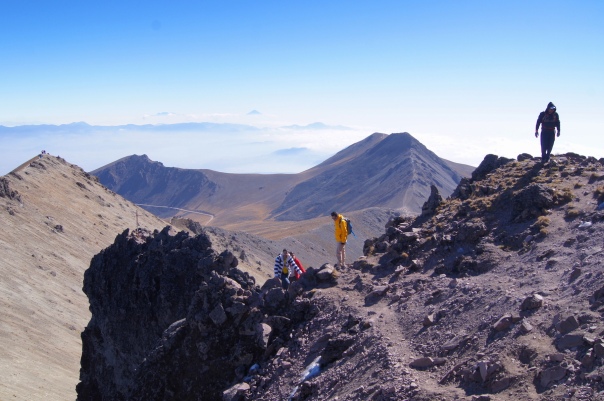
Two lakes are inside the huge crater:
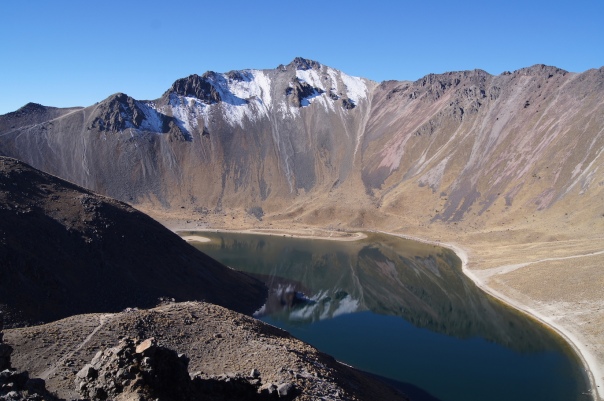
This dry flower grows all over the slopes of the volcano:
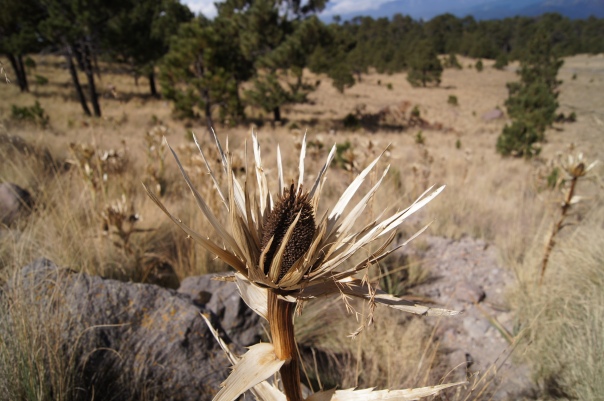
Sierra Morelos park is right next to the town of Toluca, about an hour away from the volcano:
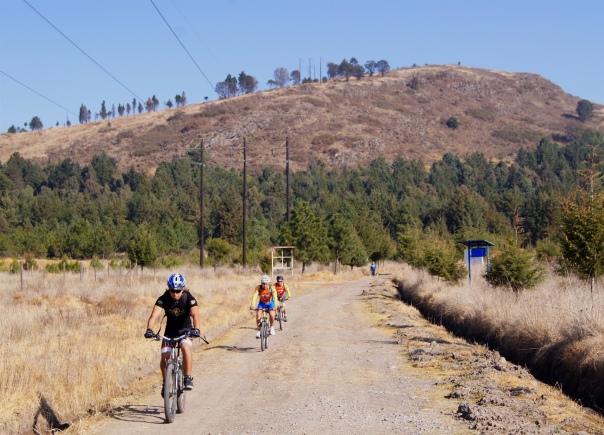
Small homes, farms, and even some ancient ruins can be found on the slopes of the mountains.

Below is Calixtlahuaca, the ruins of a Pre-hispanic city:
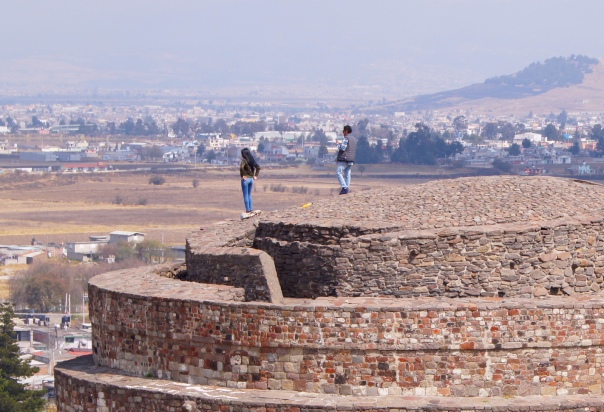
Far away at the easternmost part of Mexico are the white-sand beaches and turquoise water of the Mayan Riviera on the Mexican Caribbean coast. Below is Puerto Morelos, about halfway between Cancun and Playa del Carmen:

The island of Cozumel:
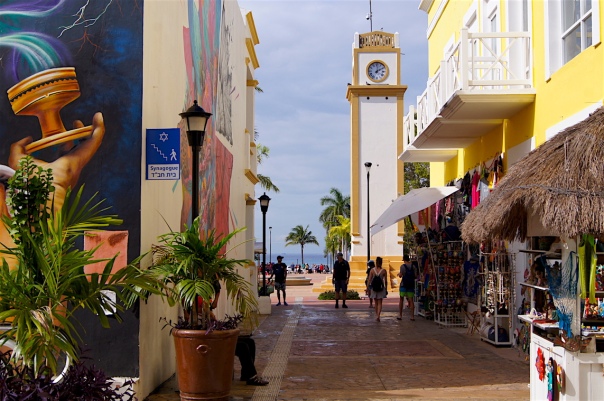
The virgin in the Cozumel public market:

A little to the south of Playa del Carmen is Punto Venado, which has excellent mountain bike trails through the jungle and along the coast. On my ride I saw crocodiles, lots of iguanas, and a big family of coati—something like a tropical raccoon that lives in the trees in groups, like monkeys.

Flamingos and other birds in the Xaman-Ha Bird Sanctuary near Playa del Carmen, in the Playacar gated community:

And of course the world-famous Mayan ruins of Chichen Itza:

On the other side of Mexico on the Pacific coast, the beach-lined bay of Acapulco is a five-hour drive from where I live, perfect for a long weekend. You can get a nice, reasonably-priced hotel right on the beach with views like this:
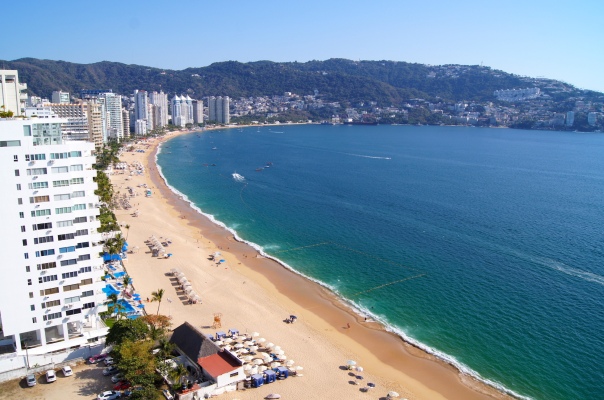
Sunset over the ocean at Acapulco:
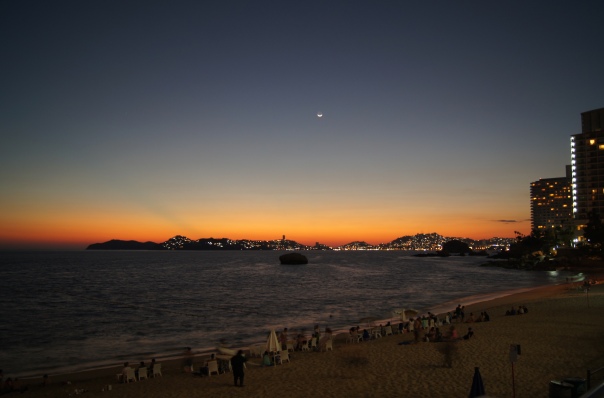
Thanks for visiting. Stories to follow for some of these places…
Advertisements
Share this:
8 Tips for Budget Travel in ChiapasIn "Mexico"
Palenque, Chiapas, MexicoIn "Mayan Ruins"
About Ted Campbell
U.S.-Canadian writer, translator and university teacher in Mexico. Travel stories and practical tips on my blog No Hay Bronca: nohaybronca.wordpress.com Twitter: @NoHayBroncaBlog // Contact: nohaybroncablog (at) gmail.com
Subscribe to:
Posts (Atom)
